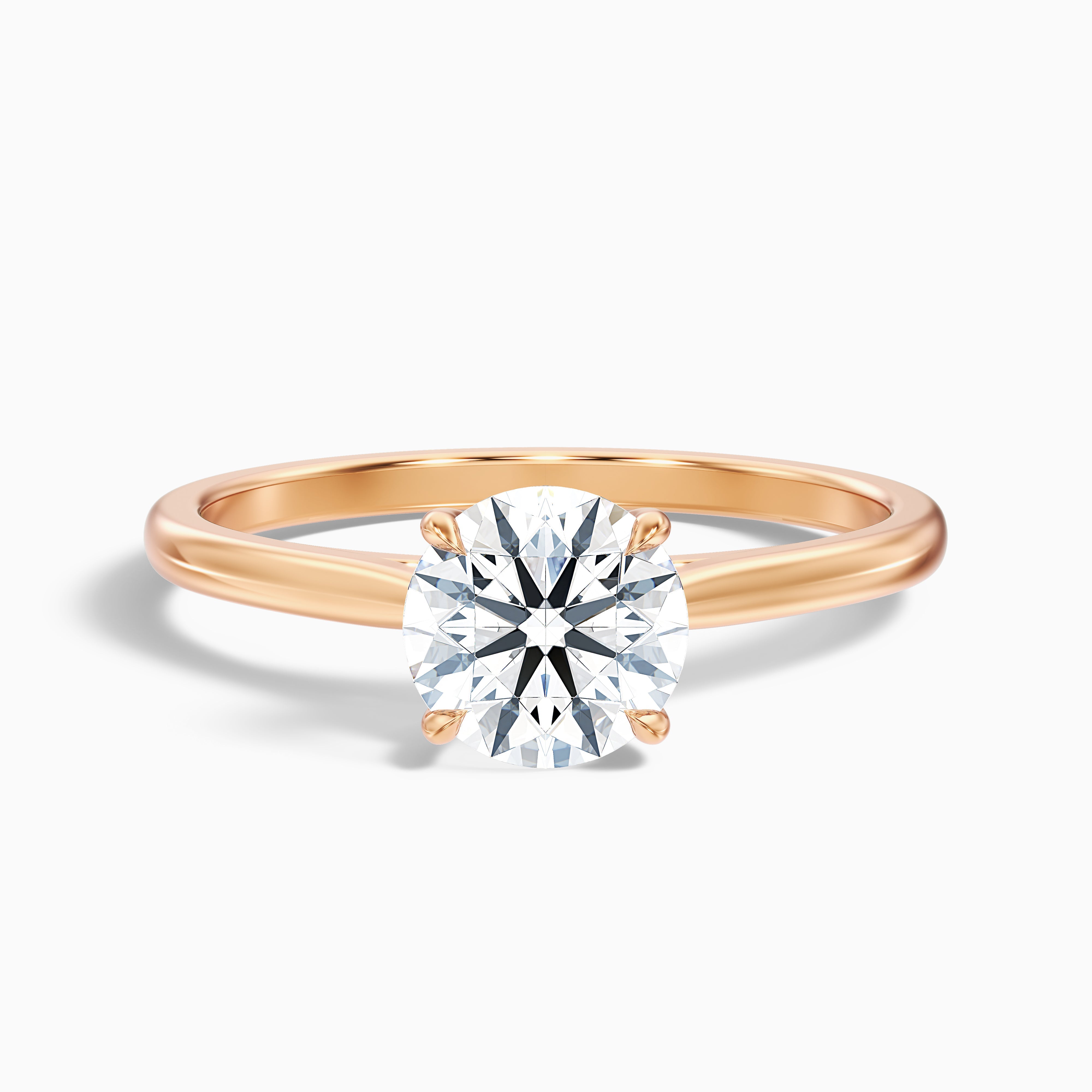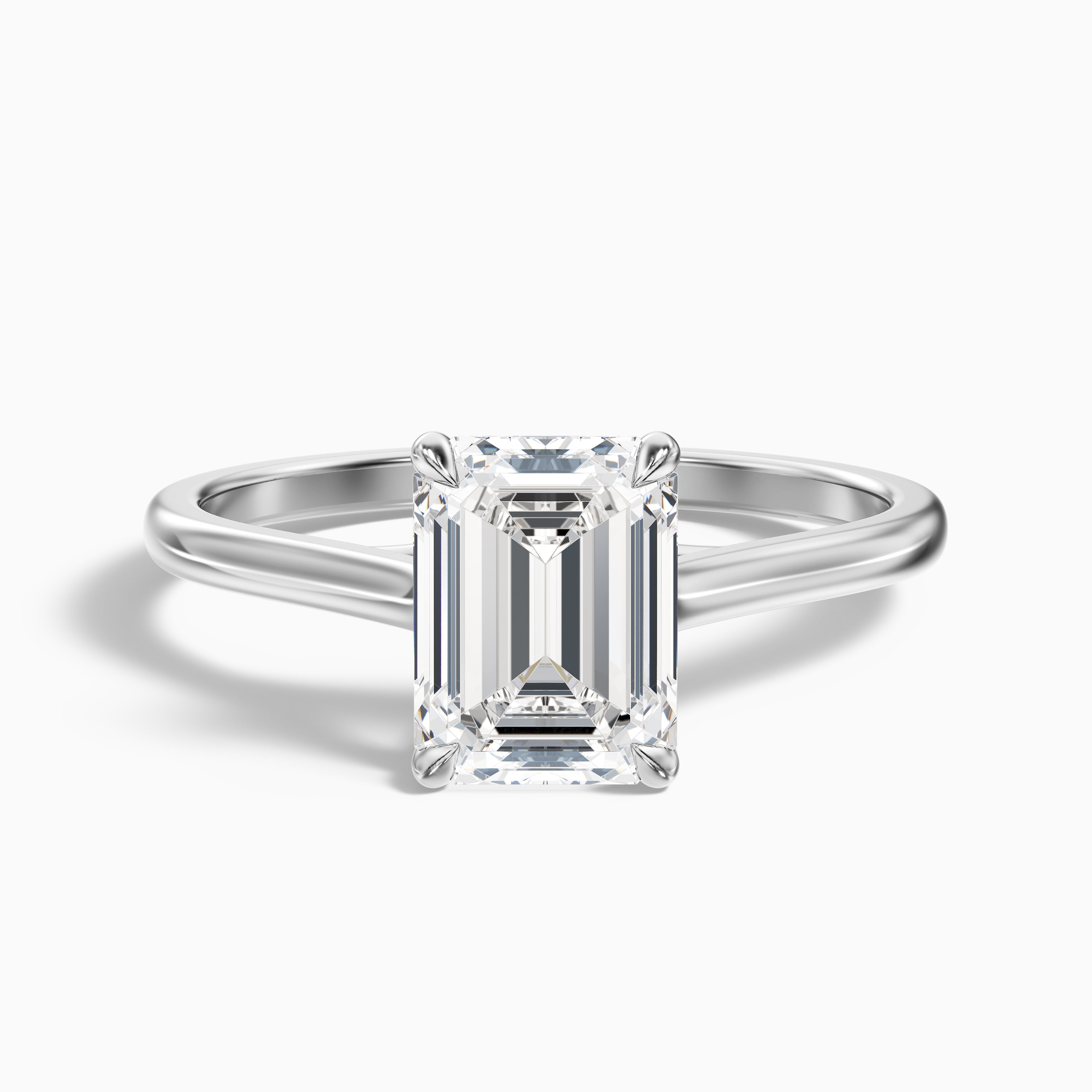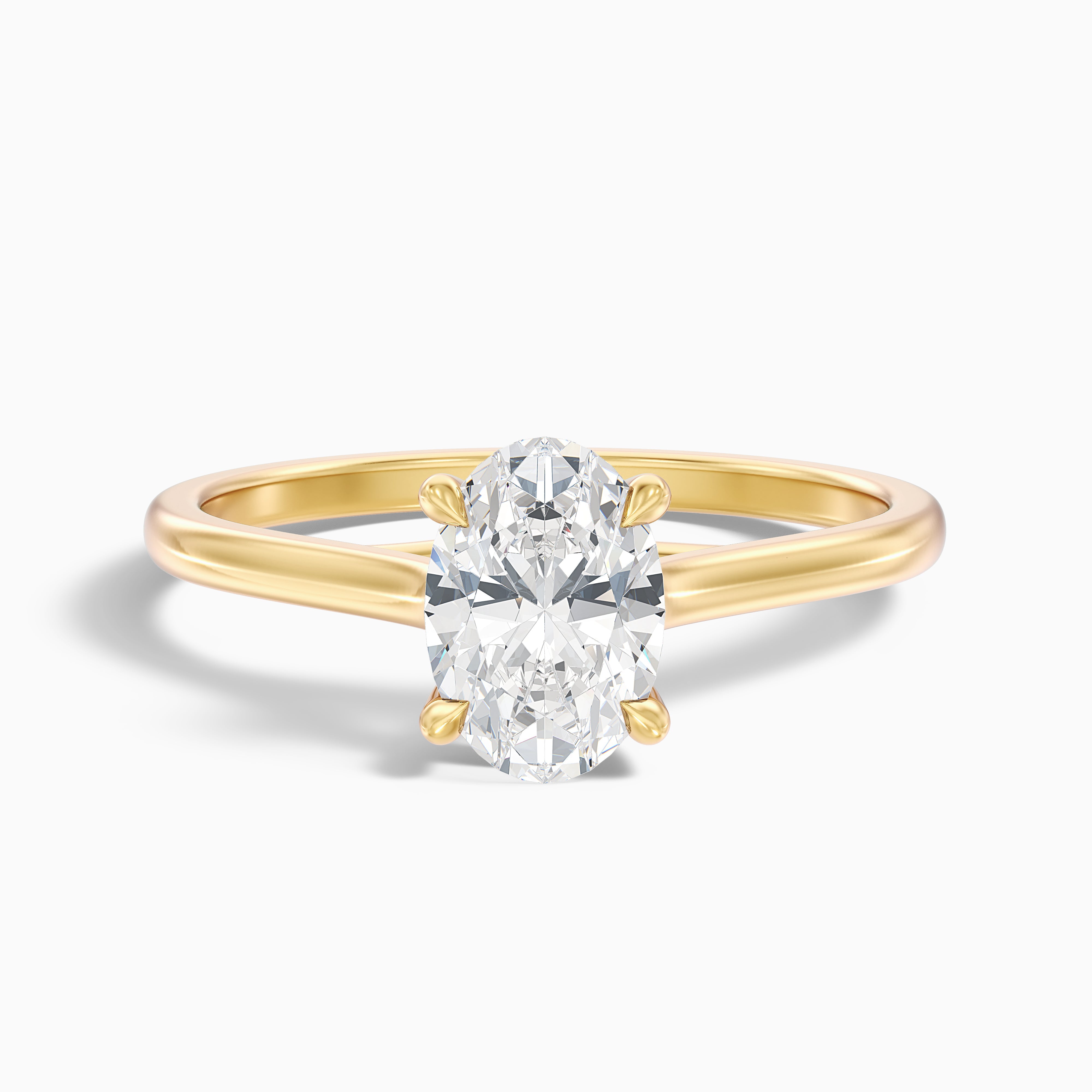Cubic Zirconia Vs. Moissanite: Which Diamond Alternative Is Better?

Diamond alternatives are gaining traction, and two names stand out: cubic zirconia (CZ) and moissanite. Both offer affordability and sparkle, but they’re far from identical. If you’re torn between them, this guide breaks down everything from durability and cost to how they look under different lights. By the end, you’ll know exactly which one fits your needs.
Understanding the Basics
Cubic zirconia (CZ) and moissanite are popular choices for those looking for diamond alternatives. These stones mimic the look of diamonds but have unique characteristics.
Cubic zirconia is a synthetic stone made from zirconium dioxide. It’s been around since the 1970s and is widely used in fashion jewelry as well as engagement rings. On the other hand, moissanite is made from silicon carbide, a material that was originally discovered in a meteorite by a scientist named Henri Moissan. Today, both stones are created in labs, making them more accessible and affordable than natural diamonds.
People choose these options for several reasons. First, they’re much cheaper than real diamonds, which makes them appealing to those on a tight budget. Second, they offer an ethical choice since neither involves mining. Third, they still provide the sparkle and shine that people love about diamonds. And finally, they’re versatile enough to be used in everything from simple earrings to elaborate engagement rings.
Comparison Table: Cubic Zirconia vs. Moissanite
| Feature | Cubic Zirconia (CZ) | Moissanite |
|---|---|---|
| Material | Zirconium dioxide | Silicon carbide |
| Hardness (Mohs Scale) | 8–8.5 | 9.25 |
| Weight | Heavier | Lighter |
| Cost per Carat | Very affordable (<$20 for 1 carat) | Moderately priced ($300–$600 for 1 carat) |
| Brilliance & Fire | High initial sparkle, fades over time | Intense fire and rainbow flashes, long-lasting |
| Color | Typically colorless | Slight warmth (may appear faintly yellow/gray) |
| Clarity | Usually flawless | May have tiny inclusions, rarely visible |
| Durability | Prone to scratches, chips, and cloudiness | Resists damage, maintains brilliance over time |
| Resale Value | Little to no resale value | Some resale potential |
| Best For | Costume jewelry, short-term wear | Engagement rings, daily-wear jewelry |
| Ethical/Eco-Friendly | Lab-created, conflict-free | Lab-created, conflict-free |
| Light Performance | Uniform glow | Double refraction, intense fire |
| Maintenance Needs | Requires frequent cleaning | Low maintenance, occasional wiping suffices |
Physical Characteristics
When it comes to physical traits, cubic zirconia and moissanite couldn’t be more different. CZ is softer and heavier compared to moissanite. The weight difference is noticeable when you hold a CZ piece in your hand because it feels denser. Moissanite, on the other hand, is lighter and harder, which gives it some advantages over CZ.
The hardness of a gemstone is measured using the Mohs scale. Diamonds top this scale at 10, meaning they’re the hardest known material. Moissanite scores 9.25, making it incredibly durable and resistant to scratches. Cubic zirconia, however, sits lower on the scale between 8 and 8.5. While this is still fairly hard, it means CZ is more prone to scratching and chipping over time.
Heat resistance is another important factor. Moissanite can handle high temperatures without losing its structure or appearance. CZ, unfortunately, isn’t as resilient. Over time, exposure to heat or sunlight can cause CZ to lose its shine and develop a cloudy look.
Comparative Analysis
Now, let’s dive into how these two stones compare visually. One of the biggest differences lies in their brilliance. Moissanite has what’s called “double refraction,” which means light splits as it passes through the stone, creating extra flashes of color. This results in a fiery, rainbow-like sparkle that many people find mesmerizing. CZ also sparkles, but its light performance doesn’t quite match up to Moissanite’s intensity.
Now let's go into how these two stones compare visually. One of the biggest differences lies in their sparkle. Moissanite has what's called "double refraction," which means light is split as it passes through the stone, creating extra flashes of color. This results in a fiery, rainbow-like sparkle that many people find amazing. CZ also sparkles, but its light performance doesn't quite match up to Moissanite's intensity.
Color is another area where these stones differ. CZ is colorless, mimicking the pure white appearance of high-quality diamonds. Moissanite, however, often has a slight warmth to it, sometimes appearing faintly yellow or gray, depending on the lighting. For some, this subtle tone adds character; others may prefer the crisp clarity of CZ.
Clarity is where CZ shines. Most cubic zirconia stones are flawless because they’re manufactured under controlled conditions. Moissanite can occasionally have inclusions, tiny imperfections within the stone, but these are so small that they’re hard to spot with the naked eye.
If we’re talking about resemblance to diamonds, moissanite edges out CZ. Its optical properties and durability make it a closer match overall. But don’t count CZ out just yet; it’s still a great choice for those who want something that looks clean and classic.
Economic Factors
Let’s talk about money. If you’re shopping on a budget, cubic zirconia is the clear winner. It’s significantly cheaper than moissanite, often costing only a fraction of the price per carat. For example, a one-carat CZ might cost you less than $20, while a similar-sized moissanite could range from $300 to $600.
But there’s more to consider beyond upfront costs. Over time, moissanite tends to retain its brilliance and appeal, making it a better investment for long-term wear. Cubic zirconia, unfortunately, doesn’t age as gracefully. After years of use, CZ can become dull, scratched, or even discolored, requiring replacement.
Resale value is another point worth mentioning. Moissanite does have some resale potential, though it’s not nearly as valuable as diamonds. Cubic zirconia, on the other hand, rarely holds any resale value due to its low cost and susceptibility to wear and tear.
Manufacturing and Formation
Both cubic zirconia and moissanite are lab-created, but their origins tell very different stories. CZ is entirely synthetic, meaning it doesn’t exist in nature. Scientists developed it specifically as a diamond simulant. Its production process is straightforward and inexpensive, which explains why it’s so affordable.
Moissanite, on the other hand, is based on a naturally occurring mineral first discovered in a meteorite crater by French chemist Henri Moissan in 1893. Natural moissanite is extremely rare, so today’s versions are grown in labs to replicate its beauty and durability. This connection to outer space adds a bit of intrigue for buyers who appreciate unique backstories.
From an ethical standpoint, both stones are conflict-free and eco-friendly. Unlike mined diamonds, neither contributes to environmental destruction or human rights issues. Plus, their lab grown nature ensures consistent quality and availability, which is a big plus for consumers.
Origins and Historical Context
To truly understand these stones, it helps to know where they came from. Cubic zirconia has been used in jewelry since the 1970s, when scientists first perfected its production. At the time, it was marketed as a luxury alternative to diamonds, though it eventually became associated with affordability instead.
Moissanite’s journey began much earlier, in 1893, when Henri Moissan stumbled upon tiny crystals of silicon carbide while studying a meteorite in Arizona. He initially thought he’d found diamonds, but further analysis revealed otherwise. Fast forward to the late 20th century, and moissanite started gaining traction as a premium diamond substitute thanks to advancements in lab technology.
In recent years, both stones have seen a surge in popularity. Celebrities and influencers have embraced them for their affordability and ethical appeal. Social media has played a huge role in spreading awareness about these alternatives, especially among younger generations who prioritize sustainability and value.
Appearance and Aesthetic Factors
Over time, the appearance of cubic zirconia and moissanite can change in noticeable ways. CZ tends to develop a glassy, cloudy look after prolonged wear. This happens because it’s softer and more prone to surface damage. In contrast, moissanite maintains its brilliance and fire, even after years of daily use.
One of moissanite’s standout features is its ability to produce rainbow flashes under light. These colorful bursts are caused by its double refraction property, which makes it catch the eye in a way CZ simply can’t.
Lighting plays a big role in how each stone appears. Under natural sunlight, moissanite’s fire becomes even more pronounced, while CZ might start to look flat or dull. Artificial lighting, like fluorescent bulbs, can also highlight differences in their sparkle.
Customization is another area where these stones shine. Both can be cut into various shapes like round, princess, oval, etc., to suit personal preferences. However, Moissanite’s superior durability makes it a favorite for intricate designs that require precision and longevity.
Usage and Applicability
Where do these stones fit best? Cubic zirconia is often used in costume jewelry or pieces meant for occasional wear. Its affordability makes it ideal for statement necklaces, cocktail rings, or trendy items that won’t see heavy use. Because it’s less durable, it’s not the best choice for everyday jewelry like engagement rings.
Moissanite, on the other hand, is perfect for engagement rings and daily wear pieces. Its toughness ensures it can withstand the rigors of regular use without losing its luster. Many couples opt for moissanite engagement rings because they offer a balance of affordability, beauty, and durability.
Setting styles also play a role in enhancing each stone’s appearance. For CZ, simpler settings tend to work best as they keep the focus on the stone itself. With moissanite, bold and intricate designs can amplify its fiery brilliance. Classic solitaire rings, halo settings, and vintage-inspired designs all look stunning with either stone, but moissanite’s versatility gives it the edge.
Understanding Quality, Durability, and Longevity
Durability is key when choosing a gemstone, especially for pieces you plan to wear every day. Unfortunately, cubic zirconia falls short in this department. It’s softer and more prone to scratches, chips, and cloudiness over time. Regular cleaning and care can help extend its life, but eventually, most CZ stones will need replacing.
Moissanite, meanwhile, is built to last. Its high hardness rating means it resists scratches and chips, and its heat resistance ensures it won’t discolor or fade. Even after years of wear, moissanite retains its sparkle and structural integrity, making it a practical choice for long-term use.
Maintenance needs vary between the two stones. CZ requires frequent cleaning to prevent buildup that can dull its surface. Moissanite, being harder and more resistant, doesn’t require as much attention. A quick wipe with a soft cloth is enough to keep it looking fresh.
Read More: Cubic Zirconia vs Lab Grown Diamond: Key Differences
Optical Characteristics
Optical performance is another area where moissanite outshines cubic zirconia. When new, CZ offers an impressive sparkle, but this diminishes over time as the stone becomes worn or damaged. Moissanite, thanks to its double refraction, continues to dazzle with intense fire and brilliance.
How each stone reflects light differs dramatically. CZ scatters light evenly, creating a uniform glow. Moissanite, however, splits light into multiple directions, producing vivid flashes of color. This effect is particularly striking under direct light sources, whether natural or artificial.
Viewer perception also varies depending on the setting and lighting. In brightly lit environments, moissanite’s fire steals the show, while CZ provides a calmer, more subdued shimmer. Ultimately, your preference will depend on whether you lean toward bold or understated aesthetics.
Further Considerations
Ethical and environmental concerns are increasingly important factors for buyers. Both cubic zirconia and moissanite are conflict-free, meaning no harmful mining practices are involved in their creation. Additionally, their lab grown nature reduces their carbon footprint compared to mined diamonds.
Hypoallergenic properties are another consideration. Both stones themselves are safe for sensitive skin, but the metals used in their settings matter, too. Platinum, titanium, and surgical-grade stainless steel are excellent hypoallergenic options.
Availability and customization are the final points to think about. Most jewelers offer a wide selection of CZ pieces due to their affordability. Moissanite, while slightly harder to find, is becoming increasingly popular, with many designers now offering bespoke options tailored to individual tastes.
Conclusion
Choosing between cubic zirconia and moissanite ultimately depends on your priorities. If you’re looking for affordability and simplicity, CZ is a solid choice. But if durability, brilliance, and long-term value matter more, moissanite is the way to go. Either way, both stones offer beautiful alternatives to traditional diamonds, proving that you don’t need to compromise on style or ethics to find the perfect piece of jewelry.






